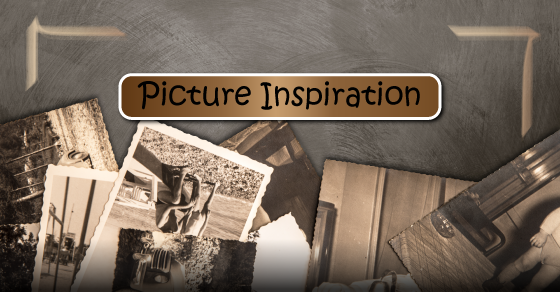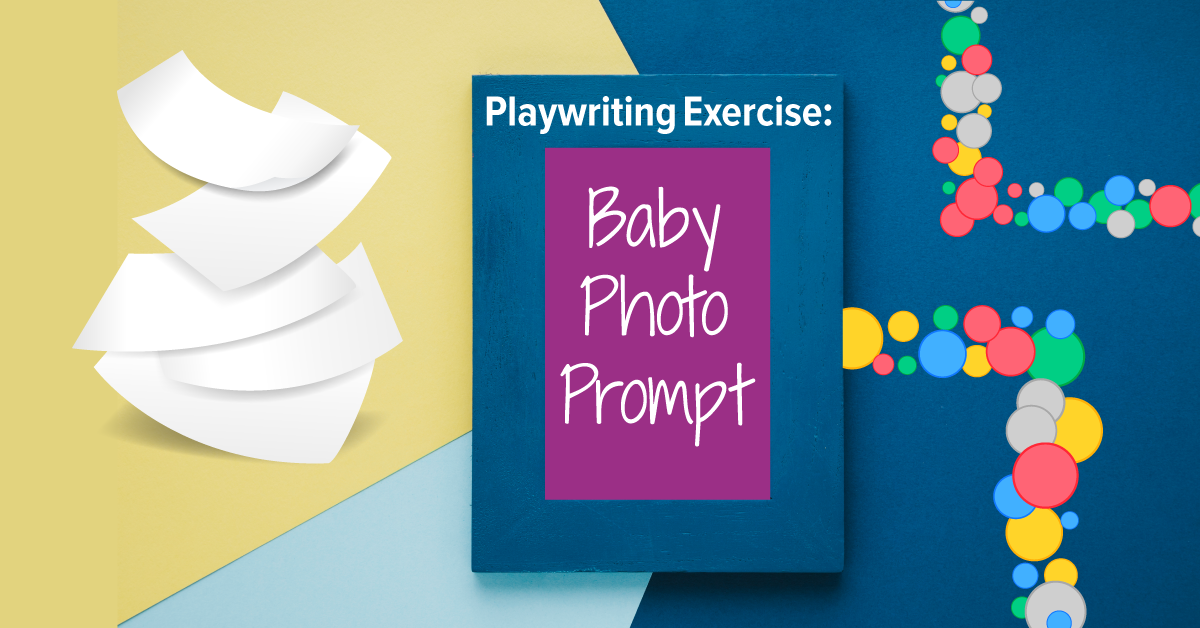Picture Inspiration
Use a picture as a jumping off point for writing.
Sometimes all students need is a little push to get the writing ball rolling. Use pictures for that push. You can have students create source material for a scene or monologue. You can use pictures as a character development exercise. Use pictures with landscapes or with people. There are endless opportunities.
All of these exercises can be downloaded below in a printable PDF.
Questions
Give students a picture and take them through a question/answer session. This will give students a method of analyzing a photo as a first step toward writing a monologue or scene.
- Give the photo to the class.
- On the back of the handout, students ask five questions of the photo.
- The five questions should begin with the words “who, what, when, where, and why.”
- Collect the sheets, and then re-distribute them. Each student should receive a handout with questions from a different student.
- Each student must answer the questions on the back of their new sheet.
- Emphasize that the aim of the exercise is to answer the questions with sincerity.
- Collect the handouts and discuss. How did the process differ for students between asking and answering questions? Which was easier? How could they use their answers to write a scene or play? Brainstorm possibilities.
Character Development
Give students a photo that features a person. Have them create a character based on their interpretation of the person in the photo.
Answer the following questions.
- Who is in this photograph? Give them a name and an age.
- What do they do?
- Who is in their family?
- Where do they live?
- What is their favourite food? Least favourite food?
- What is the emotional state of the person in the photograph? Why?
- What will they do next?
- What is their most important relationship? Describe it.
- What secret are they keeping and why?
Divide students into groups and have them share their answers. How are the answers similar and how they are different? How do the students see the character and why did they answer the way they did?
As a class, have a discussion about how they perceive people from the outside. How can an exercise like this help them develop characters for plays?
Location Prompts
Use photos to prompt students to think specifically about different locations. Beginning writers often stick to what they know when it comes to locations, and unique photos can show them theatrical possibilities. Also, beginning writers equate theatre locations to movie locations. It is, of course, impossible to stage a scene as realistically as a movie. When students try and inevitably fail, they think it’s because they’re poor writers. If you can prompt students to take something real that they see in a photo and change it to suit the stage, they will start to create a habit of theatrical thinking.
Respond to the questions and activities below using this photo.
- Where is this location?
- What time of year is it?
- Is something usual or unusual happening?
- Automatic write for two minutes in response to this photo. What are your thoughts on the location? Don’t censor yourself! Just get words on the page.
- What character would be comfortable in this location? Describe them.
- What character would be uncomfortable? Describe them.
- Write a conversation between those two characters.
- If you had to stage this location using limited props (two cubes, a bench, a music stand and a garbage pail), how would you do it?
- Theatre often uses dialogue to create the world of a location, rather than realistic sets. Write a line of dialogue that would show the audience where this picture takes place.
Monologue
The best way to get better at a genre of writing is to practice it. So the way to become a better playwright is to practice writing monologues and scenes. The more students practice, the more comfortable they’ll become. Instead of giving students a blanket direction to ‘write a monologue,’ use photos to provide a starting point. There’s a story, a character, at the very least a photograph on which to base the monologue.
Use the photo above as a starting point for a monologue.
Start by asking questions of the photo (who, what, when, where, why), create a character profile (Who is the girl? What’s her name? What’s her most important relationship?), and do some automatic writing on the location. Then use one of the following prompts to write a monologue.
- The girl has just received some bad news. Write that monologue.
- The girl has a secret. She tells it to the dog in a monologue.
- The girl has to make a decision. Write that monologue.
- The girl hates fishing. Why is she doing it? Write that monologue.
- It’s the last day of summer. The girl in this photo is worried about going to a new school. Write that monologue.
Related Articles
81 Playwriting Exercises
by Lindsay Price
81 exercises that can be used to get students in the habit of writing on a regular basis.
How to Write a Play for your Students
by Lindsay Price
You’ve chosen to write a play for your students! Where do you start?
Resource Bundle - Playwriting
Use these 4 Playwriting drama teaching resources to make playwriting possible with your students. Great for warm-ups, prompts, writer's block and more!
Scene Spurs - Writing Prompts for Dramatic Depth
by Lindsay Price
Scene Spurs is a collection of photo-based writing prompts developed by playwright Lindsay Price. The set includes 35 different Spurs along with an instruction guide to integrate them into your drama classroom.
Scene Spurs: Writing Prompts for Dramatic Depth Volume Two
by Lindsay Price
35 more photo-based writing prompts developed by playwright Lindsay Price. Includes an instruction guide and tips to integrate them into a distance learning curriculum.








